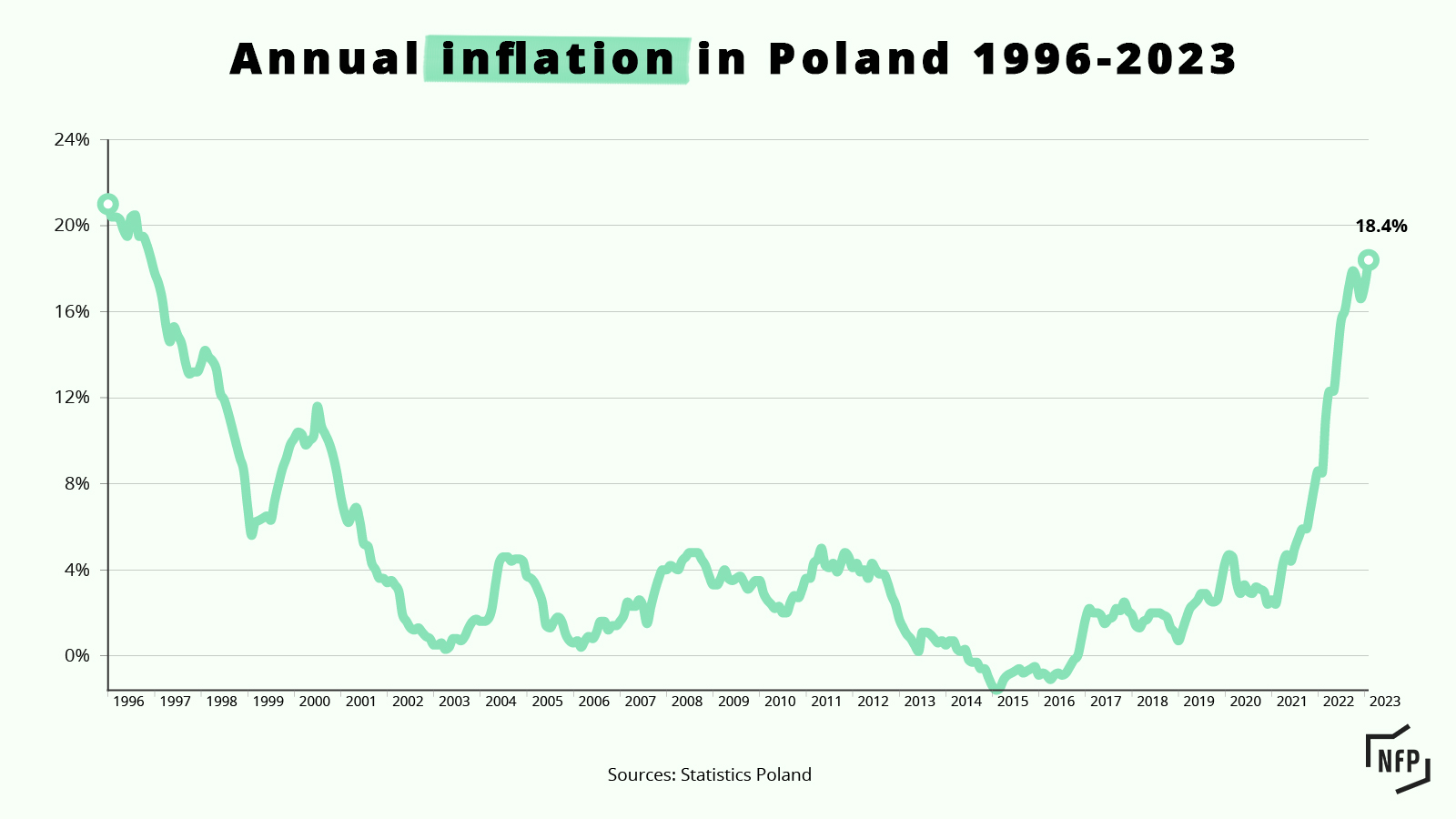Annual inflation accelerated again to reach 18.4% in February, its highest level since 1996 though slightly below forecasts. While inflation has surged in Poland over the two years, economists believe that last month’s figure will mark a peak and that price growth will slow in the coming months.
The new figures from Statistics Poland (GUS), a state body, show that inflation in February surpassed the recent high of 17.9% recorded in October 2022. According to GUS’s data, the prices of food, transport and energy rose fastest in February.

GUS also today announced that it had revised its annual inflation reading for January from 17.2% down to 16.6%, which analysts at mBank note is the largest revision in the history of GUS’s inflation surveys.
This change was the result of an annual update to the theoretical basket of goods used to calculate inflation, which now includes new items in categories such as medical diagnostic testing, leisure, catering services and beauty services while the sample of services such as furniture repair and sports equipment has been reduced.
mBank’s economists note that if the product weights in the inflation basket surveyed by the GUS had been adjusted in line with market expectations, the February inflation reading would have been close to 19.5%, just under the 20% that has long been forecast as the possible peak of the inflation.
Bartosz Sawicki, an analyst at currency exchange platform Cinkciarz, agrees with mBank that inflation is now set to slow down.
To największa rewizja w historii badań inflacyjnych @GUS_STAT. Same wagi ruszyły się raczej zgodnie z intuicją. Więcej wydaliśmy na żywność, użytkowanie mieszkania, transport. Co ciekawe, spadała waga używek (papierosów i alkoholu). pic.twitter.com/qjlM5ugmYi
— mBank Research (@mbank_research) March 15, 2023
Main photo credit: Karolina Grabowska / Pexels

Alicja Ptak is deputy editor-in-chief of Notes from Poland and a multimedia journalist. She has written for Clean Energy Wire and The Times, and she hosts her own podcast, The Warsaw Wire, on Poland’s economy and energy sector. She previously worked for Reuters.




















